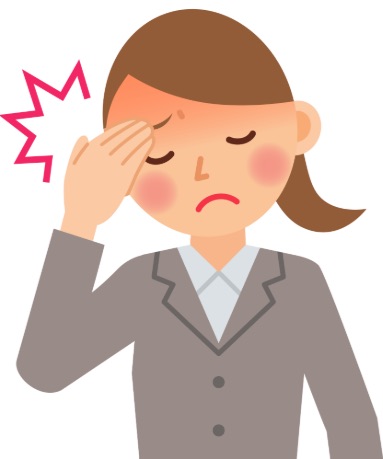
Migraine headaches are a bit of mystery to the medical world. This ailment tends to be poorly understood and frequently undiagnosed and undertreated. According to the Migraine Research Foundation, this neurological disease affects nearly 39 million Americans. Migraines are characterized by severe, throbbing pain that is usually found on only one side of the head. Migraine headaches can also be accompanied by visual disturbances, dizziness, nausea, vomiting and extreme sensitivity to light and sound. These types of headaches can last from 4 hours to several days.
Neurologists are usually the doctors that diagnose migraines. They do this through the use of blood tests, MRI’s, CT scans and possibly even a spinal tap. All of these tests are used to determine if there is an underlying infection, toxin buildup in the body, tumors or blood vessel issues. If migraines are suspected, the usual treatment is pain relieving medications, vasoconstriction medications, anti-nausea meds, opioids and sometimes steroids. All these medications are used to calm the symptoms of migraines, but they do not actually treat the cause of the problem.
There are always alternative treatments that can be very helpful for people suffering from migraines. Here are a few that might be a better fit than long term medications with harmful side effects.
1. Exercise – Everybody knows that exercise is good for the body. But for people with chronic pain, it is even more important. Just by sitting at a desk, working on a computer all day, we are adding an additional 20-30 pounds of pressure to our necks! This can create stress and tension on the muscles and tendons in the neck and shoulder area, which can contribute to migraine pain and frequency. Studies show that by merely adding in 20 minutes of stretching daily, migraines and other chronic pain levels can be significantly reduced. Plus exercise gets the blood pumping and increases oxygenation to the tissues. Both are important for relieving pain and inflammation.
2. Healthy Diet – Diet plays such an important role in our lives. And for those who suffer from migraines, it is even more important to pay attention to what is being eaten. For many migraine sufferers, gluten sensitivities can be the main cause of the pain. Gluten is a component found in wheat and it is known to increase inflammation in the body. Magnesium and B vitamins are also very important for migraine sufferers. Studies show that many migraine sufferers actually have low levels of both magnesium and B vitamins. Magnesium blocks pain-transmitting chemicals in the brain, while B vitamins help decrease oxidative stress in the body that can lead to chronic pain and inflammation.
3. Massage – Migraines affect each person differently and therefore, the type of massage that works best, will vary from person to person. A deep tissue massage focusing on tense muscles in the neck, jaw and upper back may work wonders for some people. For others, this kind of pressure may be too intense. A gentler, soothing Swedish massage may be more effective in helping their body relax and make their pain subside. And yet another option is neuromuscular massage. By targeting specific trigger points in the head, neck, hands and feet, your therapist can send signals to your body to calm down and release tension.
4. Essential Oils – There are about 10 essential oils that can be used daily to prevent migraine attacks by decreasing inflammation, stress and increasing happy hormones. Some oils can also decrease migraine intensity and length when used during an attack. Some essential oils for migraine prevention and relief include peppermint, rosemary, lavender and chamomile. These oils can target migraine symptoms because they help to reduce inflammation and relax the muscles, both of which are important factors for pain relief.
5. Acupuncture – Acupuncture is part of the East Asian Medical system that has been around for nearly 3000 years. Acupuncture uses pressure points on the body to help decrease pain and inflammation, while improving circulation and the flow of energy within the body. When somebody is suffering from a migraine, all the energy is rushing to their head. By stimulating pressure points on the feet, this energy can then be drawn down and reduced, thus decreasing the intensity of the migraine. Acupuncture can also help with the treatment of the other symptoms frequently associated with migraines, such as nausea and muscle tension. Lastly, acupuncture helps to lower cortisol levels that can be exacerbated by stressful situations, while also balancing other hormones in the body that may contribute to migraines.
If you are one of the millions of Americans who suffers from migraines, you are not alone. But the silver lining is that there are natural remedies out there that can help you get your life back. Hopefully one or more of the aforementioned treatments will be helpful for you.

